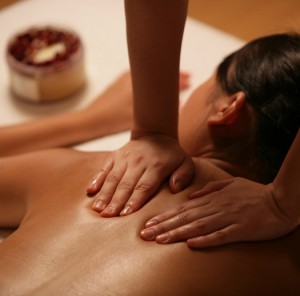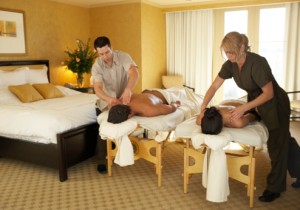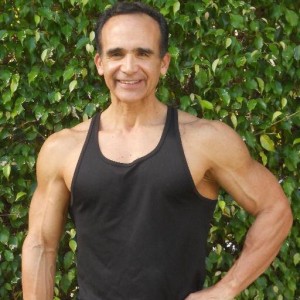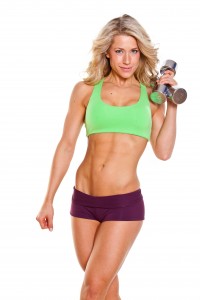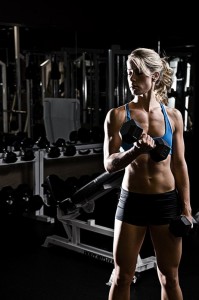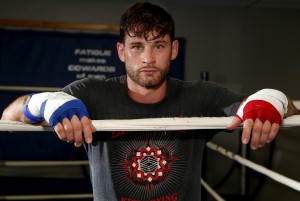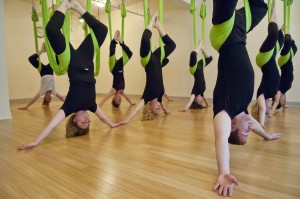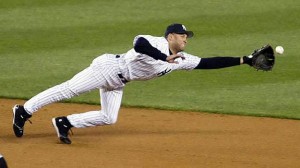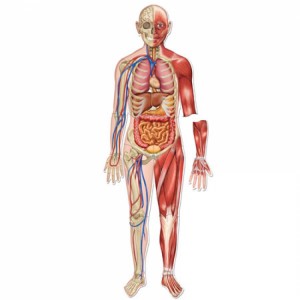By: Eddie Jo, MS, CSCS, NSCA-CPT and Michael J. Ormsbee, PhD, CSCS, CISSN
Date Published: October 2011
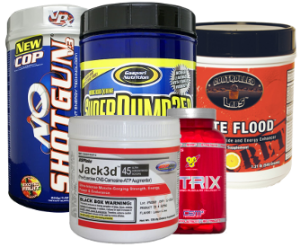 Aggressive marketing and anecdotal claims about nitric oxide (NO)-supplements result in an abundance of reports about the incredible impact of NO on muscle mass and performance. For example, this excerpt about NO-supplements is typical in the world of sports nutrition:
Aggressive marketing and anecdotal claims about nitric oxide (NO)-supplements result in an abundance of reports about the incredible impact of NO on muscle mass and performance. For example, this excerpt about NO-supplements is typical in the world of sports nutrition:
“… the first of an exciting new category of muscle-enhancers known as hemodilators. [NO supplement] has the unique ability to perpetually sustain the flow of muscle-building agents to skeletal muscle… By increasing nitric oxide production, [NO supplement] increases your maximum contractile velocity – in all muscle types. The results are immediate and consequential, and include increasing your load capacity, boosting your power output, and quickening your muscle contraction.” – Anonymous
These very “sciency” claims quoted from a not so “sciency” source have resulted in an explosion of NO product sales in recent years. Nonetheless, claims as such, or at least some close variation of it, often decorate product labels of commercialized NO-supplements and frequently succeed in selling consumers of its proposed benefits. However, rarely (or perhaps never) do these products back these claims with supporting scientific evidence. Why? Simply put, no supporting evidence actually exists, at least at this point in healthy individuals. Regardless, NO-supplements or complexes that include an NO “enhancing” proprietary blend remain extremely marketable and continues to advance as a popular sport supplement amongst those seeking to improve muscle growth and performance.
I will say, however, that select supplement complexes implicated as NO and muscle blood flow enhancers, have shown through limited research to improve markers associated with muscular growth. However, be mindful that these particular NO-supplements eliciting these positive results additionally include ergogenic ingredients, namely, creatine, BCAAs, beta-alanine, and caffeine, all of which are supported by research to possess muscle enhancing properties- more on this later. This article will briefly address the related scientific evidence so that readers may at least make an informed decision about NO-supplementation.
What is nitric oxide and what role does it play during exercise?
Before delving into a discussion on the proposed effects of NO-supplements, it might be best to highlight the physiology behind muscle blood flow during exercise. In the normal vascular response to exercise, the cardiovascular system is neurally stimulated in such a way that elevates heart rate and constricts blood vessels (i.e. vasoconstriction). Vasoconstriction decreases the diameter of vessels and reduces tissue blood flow. However, given that contracting muscles exists as the most metabolically active tissue during exercise, increasing blood flow to these muscles remains essential to ensure adequate supply of important nutrients and substrates (e.g. oxygen, glucose, etc). Thus during exercise, contracting muscles produce metabolites, such as lactic acid, that help counteract vasoconstriction and stimulate vasodilation exclusively in the surrounding vessels. This process is primarily mediated by the actions of NO, a potent vasodilatory stimulator naturally produced in specialized tissue within blood vessels called endothelium. Such vascular behavior during exercise, thereby, shunts or redistributes blood flow away from inactive tissue (e.g. GI tract) and towards active tissue (e.g. muscles), to ensure sufficient blood supply for oxygen delivery and metabolic waste removal. In a nut shell, the contracting muscles need blood and the body adapts and modifies the vascular system to deliver blood where it is needed.
With that as a background, NO supplements claim to enhance this process during exercise by increasing NO bioavailability in muscle blood vessels through the metabolism of two amino acids, arginine and citrulline. The endothelium generates NO from these two amino acids through the following conversion process: citrulline —> arginine —> NO. Thus, the term “NO-supplement” is essentially referring to supplementation with arginine, citrulline, or a both amino acids. It is claimed that supplementing these amino acids, pre-workout, will enhance NO production, vasodilation, muscle blood flow, and exercise performance, sequentially. As a result, gains in muscle mass and strength will be improved during training. While this idea is innovative hypothetically and sounds great on a label, it is evidentially unsupported (despite what the bodybuilders are telling you). Here enters the scientific evidence.
The Research
The current body of evidence shows mixed results regarding the effects of arginine supplementation on exercise performance, strength, and muscle growth. Yet, it cannot be ascertained whether any positive gains were due to elevated NO production since no studies actually demonstrated such a correlation. More commonly, however, research indicates that arginine supplementation (usually in a 3g dose) affects neither muscle blood flow nor muscle protein synthesis before, during, and after resistance exercise (3, 10). In line with these findings, other studies reported that arginine supplementation fails to increase the bioavailability of NO during exercise (10). Essentially, supplementing arginine offers no additional benefit to just resistance exercise alone in regards to muscle growth. What about endurance exercise? It can be reasonably hypothesized that through the proposed blood flow enhancing benefits of arginine, oxygen delivery to active muscles will be enhanced. Given that oxygen consumption is a key determinant of endurance performance, arginine supplementation may be advantageous. However, again, the research investigating these effects indicates no benefits to endurance or aerobic performance (5, 9). Citrulline recently became an alternative to potentially enhance NO and muscle blood flow as it was shown to raise plasma arginine levels greater than supplementing arginine itself (as counter-intuitive as it may seem) (2, 7). Consumed arginine, unlike citrulline, is largely degraded through the digestive system thus minimizing its likelihood to enter blood circulation (possibly explaining its ineffectiveness) (7).Although the effects of citrulline on muscle growth have yet to be investigated, evidence indicates significant improvements in aerobic capacity (1). However the question still remains whether these effects were due to an increase in NO and muscle blood flow during exercise.
To date, there has been one study that demonstrated positive gains in muscle mass, protein synthesis, and genetic markers of muscle growth following supplementation of a commercial NO-supplement complex (8). However, this particular blend additionally includes creatine, beta-alanine, and BCAAs, all of which have shown, through research, to positively affect muscle growth and strength in combination with resistance training. Therefore, it can be assumed that these positive training outcomes were likely independent of NO production and muscle blood flow and not attributable to the “NO enhancing” amino acids.
Explaining the ineffectiveness of NO supplements in enhancing muscle blood flow and performance
Without a doubt a majority of the “muscle enhancing” supplements currently out on the market include some “proprietary” blend trademarked as NO enhancers. Again, the ingredients in this blend typically include arginine and citrulline or some biochemical variant, e.g. arginine-alpha-ketoglutarate (AAKG). If you examine the supplement facts label of these complexes, you will often see that a healthy dose of caffeine is also included. Caffeine, a well-established stimulant, physiologically affects the neural and vascular system in such a way that opposes the effects of NO. That is, caffeine indeed serves as a potent vasoconstrictor in most areas of the body. Therefore, when purchasing a supplement containing both “NO enhancers” and caffeine, you are essentially buying ingredients that produce opposite effects. Consumers often report a sense of “rush” or “pump” following NO-supplementation and often believe that this is due to an increase in muscle blood flow. However, in reality it is most likely due to the stimulatory effects of caffeine (which by the way typically comes in large dosages) or from the exercise itself. Also, any indications of improved workout performance are also most likely attributable to the ergogenic effects of caffeine, other included ingredients, e.g. creatine and/or beta-alanine, or even to the placebo effect itself. Another explanation might involve the efficacy by which NO-supplements raises NO levels in the vessels specifically surrounding muscle tissue. Vasodilation in these particular vessels is critical for increased blood flow to muscle during exercise. However, it could be the case that the arginine/citrulline when consumed failed to exert its effects exclusively in those specific vessels, but rather increase NO in vessels all throughout the body, even in those delivering blood to inactive tissues during exercise. Granted, this problem may be addressed by properly timing NO-supplement intake in respects to your workout session, but this has yet to be researched.
Note to consumers
Several cautions must be observed when purchasing a sports supplement implicated as a muscle mass enhancer. First, you must understand what a “proprietary blend” represents. Often manufacturers list a number of ingredients under a proprietary blend category and the dosage of each individual ingredient is not indicated. Thus, consumers have no idea how much of each ingredient they are ingesting. For example, a muscle growth supplement may consist of 5000mg of a proprietary blend specified as a mix of BCAAs, creatine, beta-alanine, and arginine. However, such a blend may contain insufficient and ineffective amounts of key ingredients for muscle growth, such as BCAAs. As you can see, this imposes a problem because the individual dosage is imperative to the efficacy of a supplement, especially for select ingredients like BCAAs and creatine, which have shown to dose-dependently produce positive effects. Unfortunately, manufacturers often use the “proprietary blend” label as a strategic marketing scheme, often misleading consumers to believe that the supplement contains some specialized and exclusive formula. Therefore, practically speaking, it is recommended to purchase supplements that are backed up by research or purchase each ingredient of interest as a stand-alone supplement instead as a part of a proprietary blend. This way you can modify and optimize the dosage of each ingredient to meet your individual needs. Second, be watchful of supplements that include a blend labeled as “NO enhancers” or some variation. Provided that the supplement complex includes other known ergogenic aids, it is most likely that the efficacy of the complex will not be compromised if the NO enhancers were excluded. Although, seeing that some dosage of arginine and/or citrulline exists in almost all sport supplement complexes today, it would be harmless (at least in small dosages of about 3g or less) if these amino acids happen to be included in your favorite complex. In any case, be mindful not to define the effectiveness of a sport supplement complex by its inclusion of a “NO enhancer” blend. If these ingredients are included in your favorite pre- or post-workout supplement along with other well-supported active ingredients (mentioned above), then you are probably still reaping benefits from your supplement of choice. Just understand that the “NO-enhancing” component is most likely not doing anything but driving sales.
It’s a NO for NO-supplements
As for NO-supplements, the current scientific evidence fails to support the claims of enhanced muscle growth and exercise performance. However, on a more positive note, research does indeed support the remedial effects of arginine and citrulline on high blood pressure or hypertension (4, 6). Therefore, those who are hypertensive and especially pre-hypertensive might want to look into supplementing these amino acids regularly. Besides these clinical benefits, again, these amino acids seem to have no implications, positive or negative, on muscle growth and exercise performance. However, scientist will continue to test these claims and perhaps delineate any possible conditions in which NO-supplements would be of benefit. Stay tuned.
Eddie Jo, MS, CSCS is currently a doctorate student in Exercise Physiology at Florida State University. He is also a certified strength and conditioning specialist and has worked extensively with various athletes.
Michael J. Ormsbee, PhD, CSCS, CISSN is an assistant professor in the Department of Nutrition, Food, and Exercise Sciences and a research faculty member of the Institute of Sports Science and Medicine at The Florida State University. He specializes in exercise training and performance nutrition to optimize body composition, performance and overall health. Visit him at www.mikeormsbee.com.
References:
1. Bendahan D, JP Mattei, B Ghattas, S Confort-Gouny, ME Le Guern, PJ Cozzone. Citrulline/malate promotes aerobic energy production in human exercising muscle. Br J Sports Med. 2002; 36(4):282-9.
2. Berthe MC, S Darquy, C Breuillard, et al. High plasma citrulline and arginine levels ensured by sustained-release citrulline supplementation in rats. Nutrition. 2011.
3. Bloomer RJ, SA Williams, RE Canale, TM Farney, MM Kabir. Acute effect of nitric oxide supplement on blood nitrate/nitrite and hemodynamic variables in resistance trained men. J Strength Cond Res. 2010; 24(10):2587-92.
4. Figueroa A, JA Trivino, MA Sanchez-Gonzalez, F Vicil. Oral L-citrulline supplementation attenuates blood pressure response to cold pressor test in young men. Am J Hypertens. 2010; 23(1):12-6.
5. Greer BK, BT Jones. Acute arginine supplementation fails to improve muscle endurance or affect blood pressure responses to resistance training. J Strength Cond Res. 2011; 25(7):1789-94.
6. Miller AL. The effects of sustained-release-L-arginine formulation on blood pressure and vascular compliance in 29 healthy individuals. Altern Med Rev. 2006; 11(1):23-9.
7. Schwedhelm E, R Maas, R Freese, et al. Pharmacokinetic and pharmacodynamic properties of oral L-citrulline and L-arginine: impact on nitric oxide metabolism. Br J Clin Pharmacol. 2008; 65(1):51-9.
8. Shelmadine B, M Cooke, T Buford, et al. Effects of 28 days of resistance exercise and consuming a commercially available pre-workout supplement, NO-Shotgun(R), on body composition, muscle strength and mass, markers of satellite cell activation, and clinical safety markers in males. J Int Soc Sports Nutr. 2009; 6:16.
9. Sunderland KL, F Greer, J Morales. VO2max and ventilatory threshold of trained cyclists are not affected by 28-day L-arginine supplementation. J Strength Cond Res. 2011; 25(3):833-7.
10. Tang JE, PJ Lysecki, JJ Manolakos, MJ MacDonald, MA Tarnopolsky, SM Phillips. Bolus arginine supplementation affects neither muscle blood flow nor muscle protein synthesis in young men at rest or after resistance exercise. J Nutr. 2011; 141(2):195-200.
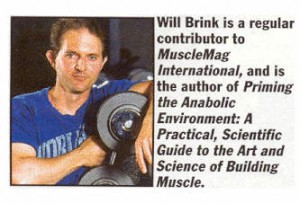 SNI: What is the most silly myth you hear regarding dietary supplements?:
SNI: What is the most silly myth you hear regarding dietary supplements?: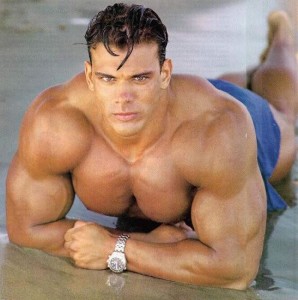
 and were distributed through Vitamin World and consumer lists. I wrote so many articles throughout that time on everything from nutrition, training, celebrity interviews etc. Long Story short- After that I became the EDITOR IN CHIEF Of the MET-Rx magazine (www.metrx.com), which I am extremely proud of.. My company Nigel Media II creates the entire magazine for the company. I work with Patrick Cornacchuilo to make sure that each issue is better than the next. I have also launched two more books through the Home Shopping Channel,- under my own brand , “Frank Sepe “Fitness as a Lifestyle” and have written books, manuals, ads etc over the years for MET-Rx. I love writing, I currently have a great blog on the Huffington Post as well. Anew book that I wrote is coming out March 2012 and that is going to be more on the mental apsect of wellness. Hope that wasn’t too long winded!!
and were distributed through Vitamin World and consumer lists. I wrote so many articles throughout that time on everything from nutrition, training, celebrity interviews etc. Long Story short- After that I became the EDITOR IN CHIEF Of the MET-Rx magazine (www.metrx.com), which I am extremely proud of.. My company Nigel Media II creates the entire magazine for the company. I work with Patrick Cornacchuilo to make sure that each issue is better than the next. I have also launched two more books through the Home Shopping Channel,- under my own brand , “Frank Sepe “Fitness as a Lifestyle” and have written books, manuals, ads etc over the years for MET-Rx. I love writing, I currently have a great blog on the Huffington Post as well. Anew book that I wrote is coming out March 2012 and that is going to be more on the mental apsect of wellness. Hope that wasn’t too long winded!!